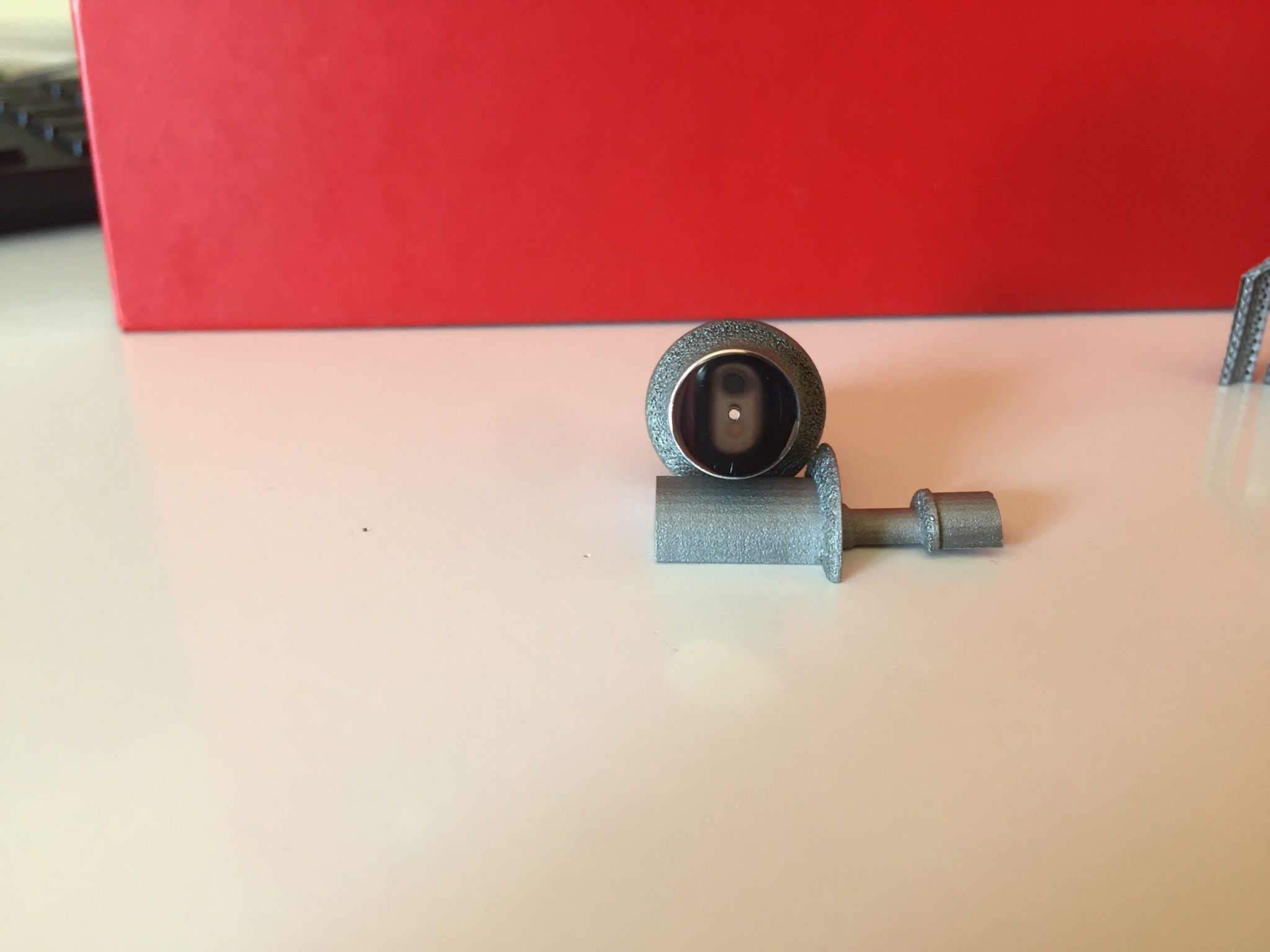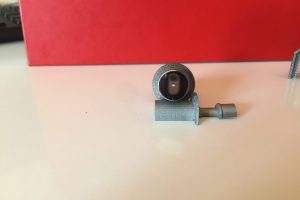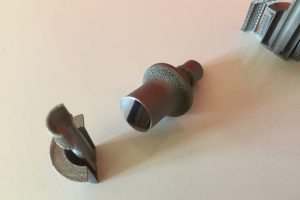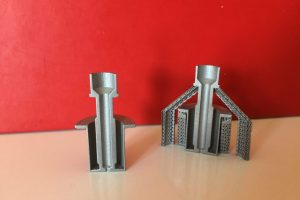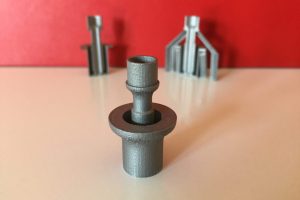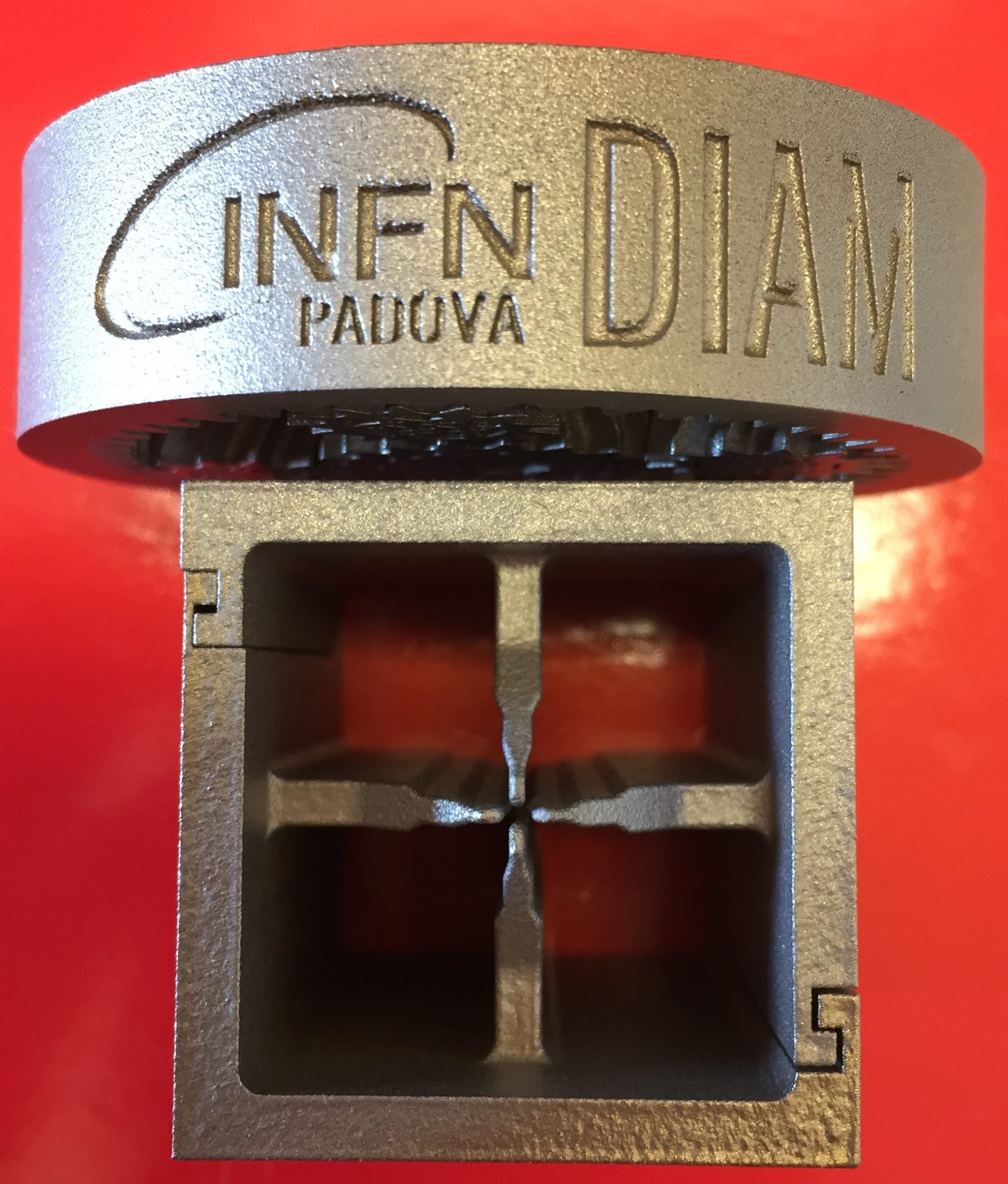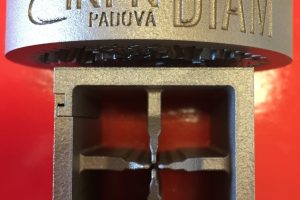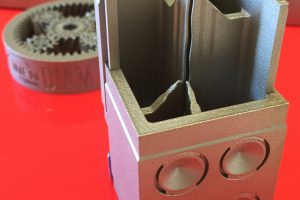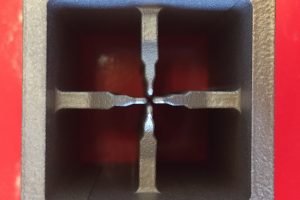Developments and Innovations on Additive Manufacturing Workgroup in INFN Padova
About us
DIAM is a workgroup of the INFN Padova section. It was born in 2016 and it is intended to carry on scientific and technological research on Additive Manufacturing (AM). The multi-disciplinary team include engineers, researchers, technicians, etc. with a background in mechanics design and material sciences.
Research activities
DIAM has participated at the “5687-1-2121-2015 POR FSE 2014-2020 Veneto” project and carried out two brilliant prototypes. The realization of high-density additively manufactured ultrapure copper product, a built-in conformal cooling Beam Dump to be used in the SPES project to LNL, and the realization of welding electrodes with integrated cooling system made by CuSn10. Both these ones have been designed, optimized, manufactured via AM and post-processed.
New fields of research are fostered with the development of metal additive manufacturing, such as the combination of applications in high-energy physics with the study of material properties. DIAM collaborates with SPES project and DTT project through R&D programs which include the development of AM powder alloys (copper alloys and refractories) by the characterization of AM processes (pure copper, nickel alloys) and refractory metals (Tantalum, Niobium, Tungsten).
DIAM also supports INFN Districts with the realization of very complex geometries components, which are realizable only via additive manufacturing. In Padua, prototypes for IFMIF project where first realized in AM and then manufactured for the experiment.
Active research
DTT Divertor Tokamak Test facility
EUROfusion launched this program to investigate the development of an efficient heat and power exhaust system of a nuclear fusion power plant. Indeed, heat loads are very consistent and up to date they are one of the main issues of any nuclear reactor, such as ITER and DEMO. Thus, the aim of DTT is to develop an experimental device that can successfully overcome challenging requirements, from the thermal point of view. The DTT experiment is expected to start in 2022 and the whole realization of the Divertor should cover a period of 7 years, according to the European Road Map.
DIAM is currently involved in the DTT project. Our group is focused on the study of the cooling system of the NBI (Neutral Beam Injector) acceleration grids through implementing CFD analyses and then creating additively manufactured prototypes.
LoCoMoSa Low Cost Molten Salt Thermal Energy Storage for Industrial Processes
LoCoMoSa project aims to demonstrate a cost-reduced medium-to long duration thermal energy storage
system based on molten salt to deliver industrial heat at 120-450 °C. This project proposes indirect
electrification using renewable energy to ensure a lower energy cost and higher energy security level for the
industry. In this way, the project can advance the decarbonization of medium-temperature industries.
DIAM will focus on the design and optimization of the steam generator, and will produce prototypes by LPBF technique.
I.FAST Innovation Fostering in Accelerator Science and Technology
I.FAST is a European project, coordinated by CERN. It aims at exploring new accelerator designs and concepts, as well as developing new strategies and technologies for improving energy efficiency and researching materials for superconducting cavities and magnets. More
I.FAST involves 49 partners (8 research infrastructures, 12 research organizations, 12 universities, 17 companies). INFN is one of them.
DIAM will design and manufacture prototypes of SRF cavities by SLM technique.
SPES Selective Production of Exotic Species
The aim of this project is the production of high intensity and high-quality neutron-rich radioactive ions for interdisciplinary applications (i.e. Nuclear Physics, Material Science and medical field). The production of the exotic species is based on the ISOL technique. A cyclotron provides accelerated protons. The Primary Beam exits the device and collides on a target material: fission reactions take place and Radioactive Ion Beams are produced. Depending on the final application, those beams see different further stages. The SPES project is part of the INFN Road Map for the Nuclear Physics. The facility is housed in LNL-INFN. More
The purpose of the collaboration between DIAM and SPES project is the production of additively manufactured components for the ion source of the facility. Thanks to AM technology, it is possible to topologically optimize and reduce the number of the components of the ion source.


